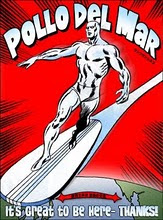Today marks an anniversary of the Nagasaki atomic bomb, the so-called "Fat Man." Many forget that we dropped two kinds of atomic bombs in three days in 1945: The first, "Little Boy," contained all the laboriously accumulated U-235; its design was so simple that it didn't need testing: Fire one subcritical U-235 mass at another U-235 subcritical mass and blammo! -- the whole thing went nuclear.
The second was a plutonium bomb -- and its design was so radical that it had to be tested first, hence "Trinity" at Yucca Flats.
The bomb makers knew early on that U-235 would be the limiting factor: Only 1/140th of any natural uranium source was useable for a bomb -- the rest is the unusable U-238 isotope. But the eggheads (really a who's who of nuclear physicists and chemists) figured out that nuking the otherwise useless U-238 with cyclotron radiation would transmute that useless uranium isotope into heavier elements. Thus began a series of top secret experiments at Berkeley which extended the Periodic Table one element at a time. That sort of work still continues.
First came element 93, the very first transuranic element, now known as neptunium, and synthesized by Edwin McMillan and Philip H. Abelson in 1940. That element proved unusable as a fissile material, so the search for the next heavier element continued. The work quickly became a rather a dirty job -- separating the toxic gemischt into identifiable components --and one more suited for chemists. Glenn T. Seaborg, and a graduate student, Arthur C. Wahl, did the yeoman's work. By early 1941, they knew that they had something new, but were unable to separate it from co-produced thorium. Seaborg and Wahl pressed on, working in a cramped third floor laboratory in the chemistry department at Berkeley. Success followed and by early March 1941 Seaborg recorded:
With this final separation from thorium, it has been demonstrated that our alpha [particle] activity can be separated from all known elements and thus it is now clear that our alpha activity is due to the new element with atomic number 94.Within weeks, and after gathering enough material, tests showed that element 94 was fissile bomb material. They were already way ahead of anyone else. Because it was immediately apparent that chemical separation of elements was easier than isotopic separation, plutonium production became a second major project in the Manhattan Project, running in parallel to uranium isotope separation.
Richard Rhodes wrote in his incomparable "The Making Of The Atomic Bomb:"
Not until 1942 would they officially propose a name for the new element that fissioned like U-235 but could be chemically separated from uranium. But Seaborg already knew what he would call it. Consistent with Martin Klaproth's inspiration in 1789 to link his discovery of a new element [uranium] with the recent discovery of the planet Uranus and with McMillan's suggestion to extend the scheme to Neptune, Seaborg would name element 94 for Pluto, the ninth planet outward from the sun, discovered in 1930 and named for the Greek god of the underworld, a god of the earth's fertility but also the god of the dead: Plutonium.


.png)









